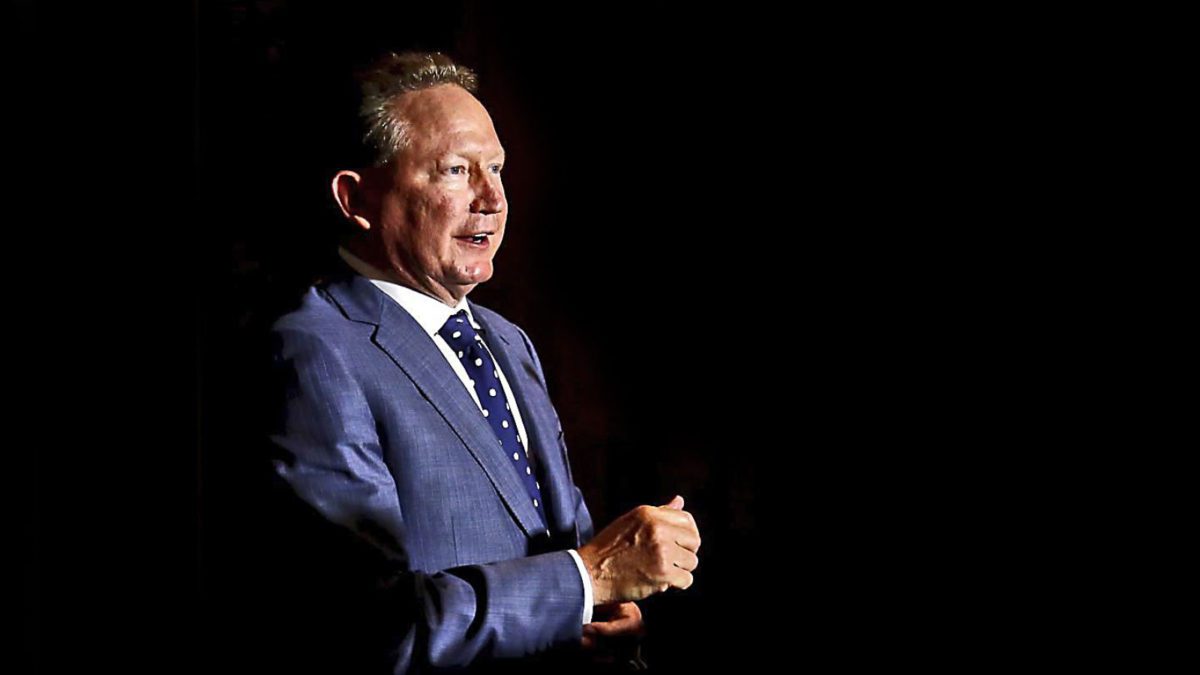Iron ore banks Fortescue’s hydrogen ambitions
So, Fortescue Metals Group (ASX: FMG) shareholders have learned that their company is to become a hydrogen and steel superpower.
Andrew Forrest, the founder, non-executive chairman and largest shareholder of Fortescue, says Fortescue will lead the way in building a steel-making industry in Australia, making “green” steel – zero-carbon steel, using zero carbon-dioxide-emissions energy.
There are two ways of doing this, he says. The first option is to replace coal in the blast furnace – which smelts the iron ore, using coke (made from steelmaking coal) as a reducing agent, at very high temperature – with “green” hydrogen, which is made by electrolysing water into its component elements of hydrogen and oxygen, both in gas form, using renewable energy.
The second, more radical, approach was to ditch the blast furnace and “just zap the iron ore with renewable electricity,” according to Forrest. (Every story I’ve seen about Forrest’s plans uses this quote, but none explain what process he is describing.)
At least Fortescue is putting its money where its founder’s mouth is, committing to trialling both methods. Fortescue will start building Australia’s first green-steel pilot plant this year, with a commercial plant in the Pilbara, powered entirely by green electricity from wind and solar, in the next few years.
Even if you are using wind or solar to power the electrolysis, it is still a hugely expensive and very energy-intensive process. Then, compression and storage of the hydrogen will not be a trivial cost, either.
Whether “green” steel really has a commercial future, certainly in the near future, will depend very much on significantly reducing the cost of generating the hydrogen. At this stage, the cost is simply too high to allow green steel to compete with traditional steel-making.
Forrest has not put a price on Fortescue’s ambitions, but says its hydrogen plans would be funded by debt tied to individual projects – the company will not risk its balance sheet.
That is good news for the company’s shareholders, who are focusing on its day job – supplying iron ore to blast furnaces at Chinese steel mills.
Fortunately, the company’s day job continues to absolutely rake in the cash, with China – which is exempt from doing anything about its carbon-dioxide emissions out to 2030, because it is a “developing nation” – hoovering up vast quantities of Fortescue’s iron ore and using it in non-emissions-conscious steel mills, to make non-green steel.
In FY20, Fortescue shipped 178.2 million tonnes of iron ore, up 6 per cent. Revenue surged 29 per cent to a record US$12.8 billion; underlying EBITDA (earnings before interest, tax, depreciation and amortisation) reached US$8.4 billion, up 38.5 per cent; and net profit increased 49 per cent, to US$4.7 billion.
The company received an average realised price in FY20 of US$79 a dry metric tonne, up 21 per cent, allowing it to improve its EBITDA margins from 61 per cent to 65 per cent, the equivalent of US$52 per (dry) metric tonne of ore shipped. Fortescue’s cash cost of production was US$12.94 a (wet) metric tonne.
Earnings per share (EPS) rose 49 per cent, to 153.9 US cents (229.2 cents) and the full-year dividend of A$1.76 a share represented a 54 per cent rise on the $1.14 paid in FY19.
FMG’s 2021 guidance is for shipments of 175 million tonnes-180 million tonnes, at a C1 (cash) production cost (based on a 70 US cents exchange rate) of US$13.00-US$13.50 a (wet) metric tonne.
Since the FY20 result, surging Chinese demand has pushed iron ore prices higher. FMG’s realised iron ore price lifted to US$106 a tonne in the September 2020 quarter, and to US121.84 in the December quarter. Against that, the C1 cost held at US$12.81.
Iron ore shipments of 46.4 million tonnes in the December quarter contributed to record shipments for a half year of 90.7 million tonnes.
On FN Arena’s consensus of analysts’ forecasts, FMG is expected to earn 241.9 US cents a share in FY21, up 57 per cent, and pay a dividend of 230.5 US cents (268.6 cents), up 31 per cent.
Thomson Reuters’ forecasts collation expects FY21 EPS of 344.3 Australian cents, and a dividend of 265.6 Australian cents.
On FN Arena’s numbers, Fortescue, at the current price of $22.66, trades at 6.3 times expected FY21 earnings, and at a fully franked dividend yield of 12 per cent, or 17.1 per cent, grossed-up.
On Thomson Reuters’ numbers, that prices FMG on 6.6 times expected earnings – and with a fully franked yield of 11.8 per cent, or 16.8 per cent, grossed-up.
Analysts don’t see much scope for price rise from here: FN Arena posts a consensus valuation of $22.98 for FMG, while Thomson Reuters has $23.04. But for Fortescue shareholders, the rivers of cash from China flow into almost unbelievably good yields – and remember, each investor’s individual yield on FMG depends on the price at which they bought the stock. Along the way, many people have paid a lot less than $22.66 for FMG – and are earning a grossed-up yield much better than 17.1 per cent.
For these fortunate investors, the “green steel” ambitions of Andrew Forrest are an option – while the day job motors along beautifully.










